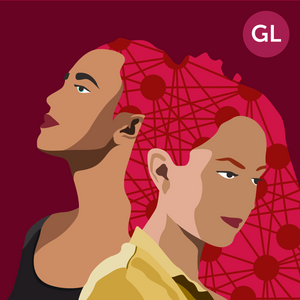[This update is not part of the story.]
So, I came across another story, the other day, and I'd like to share that with you. It's a webcomic, called Seed (I'll post the link in the description, below) that also revolves around artificial intelligence and the human mind. The story is completely different from what I'm working with in WMYY, but surprisingly enough, it mentions replication at one point (chapter 17, fyi). It has a different take in Artificial Intelligence and it's definitely worth a read.
I'd like to write a little about the science bits behind each of those stories (this one and Seed). If you're not interested in the science, just skip the rest of this update.
So, first off, there are two key differences between these stories that are worth mentioning. One is that the AI in Seed is not what I'm calling a human replica. It can sense and control the data from many electronic devices, and it's emulated inside a cloud of digital data, besides being some sort of super-intelligent demigod. Whereas in WMYY I'm working with the human brain architecture (aka. the connectome), which means replicas think and feel exactly what organic humans do. Their inputs are sensors in the body (like organic humans), and their outputs are motion (also like organic humans). So they're not "super intelligent", nor are they capable of invading networks, or even living in a cloud of devices like Turry does in Seed.
The other point is that, in Seed, the character who mentions replication also says we "don't understand the human brain enough for any of that, but when we do, we easily have the computational resources to make it happen". Currently, we don't have either, but as for predicting the future, I believe the opposite is more likely: We're closer to comprehending the brain (mapping a connectome wouldn't give us all the answers about how the mind works, but it would be enough for replication, and that's a real possibility in the near future) than to building computers powerful enough to allow for a human brain to be emulated.
For those who are interested, here is the really lengthy explanation of why this happens (skip if you don't care):
There are two major reasons why we don't have either a human connectome or computers powerful enough to emulate one. One is processing power, the other is memory.
Problem Number One: The human brain has roughly 86 billion neurons, each one processing information independently ("in parallel"). Whereas a computer processor, though much faster than a single neuron, would have to process those same 86.000.000.000 neurons one-by-one, completing a full cycle in a time no longer than what it takes for a single neuron to process information, which is a small fraction of a second. Of course, when you're thinking about that level information processing, you might want to add multiple processors to share the task (Seed does this by using cloud computing), or even better, quantum computation. But even our best performing current supercomputers would hardly make a dent in processing that much data that fast.
Problem Number Two: Storing all of the information in those 86 billion neurons as computer memory, so that it can be accessed, interpreted and altered by the processors. It is estimated that the data size required to map a human connectome easily exceeds the current size of the internet. But hey, twenty years ago we were all using floppy disks. We'll get there, someday. For mapping a connectome, it's enough to store the information in independent parts, such as multiple datacenters, you don't actually need the parts to be together, or even available for access. For emulating a human brain, though, you need all of that data available for processing at the same time. The former is an easier feat to perform than the latter.
If you try to imagine hardware powerful enough to do all of that (even combining multiple supercomputers), it's easy to see why none of this technology will be available anytime soon. If we do get to the point where we have enough resources to emulate a human brain, we'll definitely have mapped the whole brain already.
(lengthy explanation ends here)
By the way, Seed's approach to running complex neural networks (by cloud computing, of course) is much more feasible for processing large amounts of data than what I'm working with in WMYY (which is a computer contained inside a robotic shell). If replicas one day become reality (in the very far future), one would expect their neural networks to run in datacenters somewhere else, and just collect input and send signals to the shell. This would prove problematic in some ways. For instance, once the body loses network signal, the brain gets isolated in the datacenter, incapable of receiving any sensory input at all. It would also be possible to hack a replica, giving the AI fake sensory data or sending fake motion commands to the shell. But that would also solve several problems, like the physical space available inside a replica's body, the heat dissipation, and others.
The thing is that having a remote neural network wouldn't quite work with the story I have in mind (the R Unit device, for instance, doesn't make sense with cloud computing: you could simply copy the input data directly from the datacenter receiving it). The takeaway from this is that if we do get replication some day, it's almost certainly going to be cloud based. However, this is a story, not a projection of the future, so we're not going with that for WMYY.
And this ends my ramble about neuroscience and artificial intelligence. Maybe nobody will read it (like, who has the time, right?), but if you did, I hope you find it as interesting as I do.
Thanks for everything again.
Cecilia Falconiere










![[Dropped] What makes you you ~ GL](https://us-a.tapas.io/sa/1b/e3a7c1ff-6a96-4108-8eec-bb6b3abdfb2d.png)

Comments (8)
See all